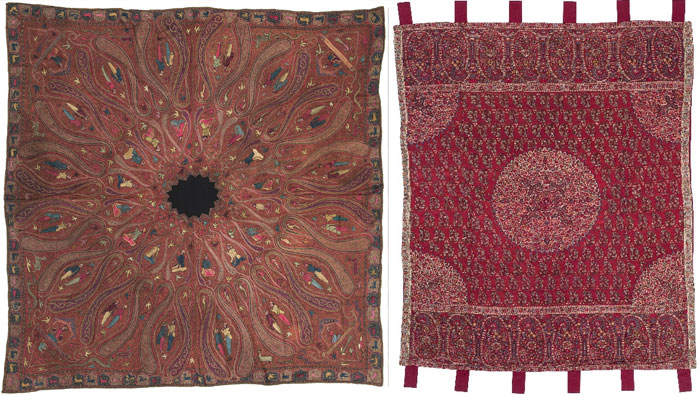
Muscat: A collection of antique Kashmiri shawls that date back to the early 19th century is being auctioned, with asking prices of up to OMR 6,000 apiece.
The collection of shawls, made in the 17th and 19th centuries the northern region of Kashmir, are being auctioned by Christie’s, the famed British auctioneer, and prices for them begin at £1,000 (about OMR 500) and rise all the way up to £12,000 (about OMR 6,000).
Known as pashminas, these Kashmiri shawls are part of the collection simply titled An Important Private Collection of Kashmir Shawls, and are hand-woven from the under-hair of goats that are found in the high-altitude areas in and around Kashmir.
![]()
A statement from Christie’s said: “Traditionally worn by men and women, these treasured heirlooms were handed down in the family for generations, prized for the very fine quality of wool used and their intricate embroidered decoration.
The high level of craftsmanship achieved by Kashmiri weavers remains unmatched anywhere in the world. Comprising 85 lots with prices ranging from £1,000 – 12,000, the online sale will be open for bidding between 11 and 18 June.
“Known in Kashmir as ‘pashmina’, the shawls are hand-woven from the softest, warmest, light-weight fabric spun from the fine under-hair of high-altitude goats,” Christie’s added. “The weaving of this fine fabric into shawls is thought to have been done in Kashmir since the 1st century AD and remains in practice even today.
**media[1028698]**
This extraordinary collection demonstrates the high level of craftsmanship achieved by Kashmiri weavers, with skills perfected over centuries which remain unparalleled anywhere in the world.”
The Moon Shawl, which was made in north India around the year 1825 and measures just 120 by 140 centimetres, is expected to be sold for between £7,000 and £10,000.
Another piece up for auction is a 19th century square shawl that combines the stripes found on these shawls with a central moon design, which in turn is influenced by the Ottoman style of carpeting found in the palaces of Cairo.
Christie’s said: “Striped examples were especially valued by members of the royal court of Jaipur in Rajasthan. Moon shawls were also very popular in Western markets especially with fashionable ladies in Britain in the late 18th and 19th centuries to be worn as accessories with their gowns.”